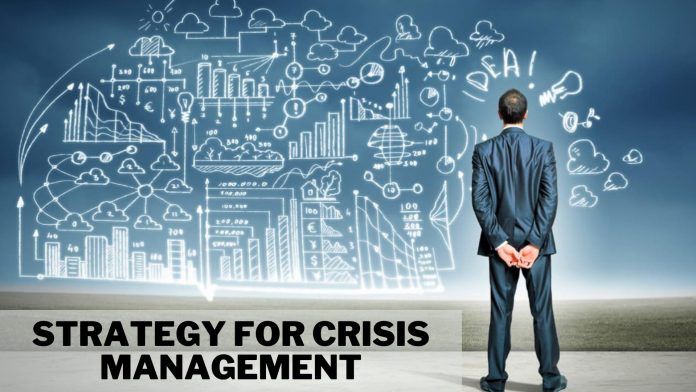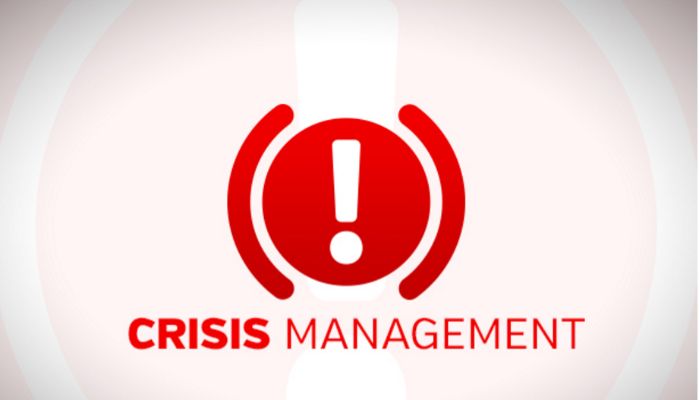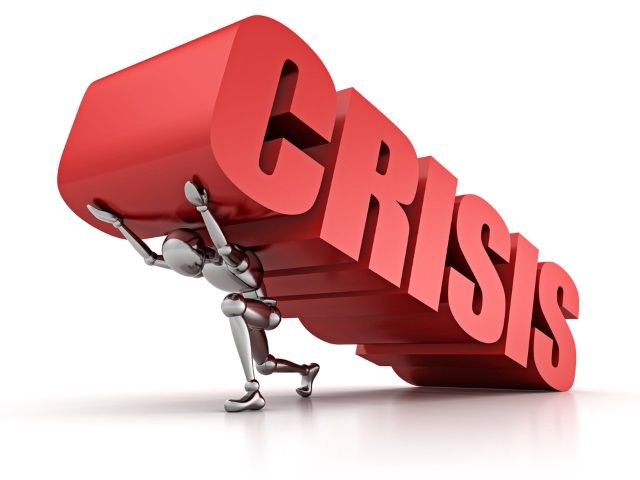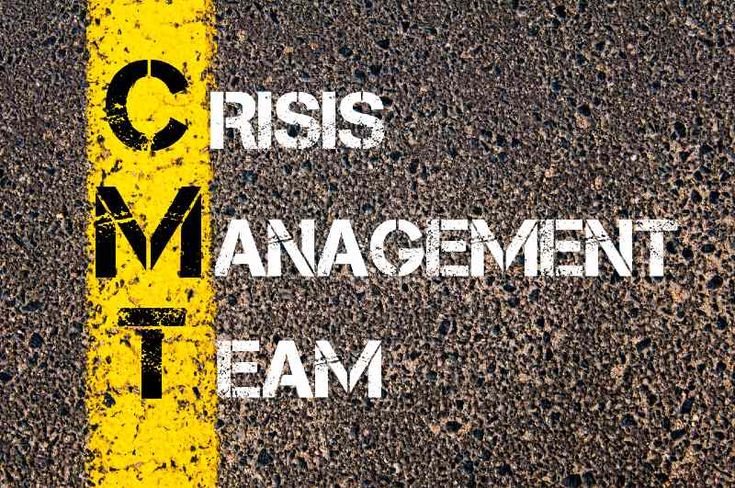
Crisis Management: Preparing Your Business for Unexpected Events
“Crisis Management: Preparing Your Business for Unexpected Events”
In today’s fast-paced and unpredictable world, businesses must be prepared for unexpected events. Crisis management is the process of preparing for, responding to, and recovering from emergencies and disruptions that can impact an organization’s operations, reputation, and bottom line. Effective crisis management involves strategic planning, clear communication, and the ability to adapt swiftly to changing circumstances. This article will explore the essential elements of crisis management and provide practical advice on how businesses can prepare for and handle unforeseen events.
Understanding Crisis Management
Crisis management is not just about reacting to emergencies as they occur; it is about proactive planning and preparation. It involves identifying potential threats, developing response strategies, and ensuring that all team members are trained and ready to act. A comprehensive crisis management plan can mean the difference between swift recovery and prolonged disruption.
The Importance of Crisis Management in Business
The ability to manage a crisis effectively is crucial for any business. Crises can take many forms, from natural disasters to technological failures, and they can have severe consequences if not handled properly. Well-prepared businesses are more likely to minimize damage, maintain customer trust, and emerge more substantial after a crisis.
Identifying Potential Crises
To prepare for a crisis, businesses must first identify the types of events that could disrupt their operations.
Natural Disasters
Natural disasters such as earthquakes, floods, and hurricanes can cause significant damage to infrastructure and disrupt business operations, often leading to costly repairs and prolonged downtime. Preparing for these events involves having a comprehensive emergency response plan that outlines procedures for immediate action, securing physical assets to minimize damage and loss, and ensuring the safety of employees through regular drills and communication protocols. Additionally, businesses should consider investing in insurance coverage and backup systems to enhance resilience and facilitate quicker recovery post-disaster.

Credit: approvedblog.com
Technological Failures
Technological failures, such as data breaches or system outages, can severely hinder a business’s operational capabilities, leading to potential financial losses and damage to reputation. Implementing robust IT security measures is critical to protecting sensitive data and ensuring the integrity of systems. Additionally, having a well-defined contingency plan for rapidly restoring services in the event of a failure can minimize downtime and help maintain business continuity.
Economic Downturns
Economic downturns often result in decreased consumer spending, which can lead to significantly reduced sales for businesses across various sectors. This reduction in revenue can cause cash flow problems, making it challenging for companies to meet their financial obligations, pay employees, and invest in future growth. To navigate these difficult times, businesses should implement robust financial management strategies, such as maintaining adequate financial reserves, cutting non-essential expenses, and diversifying revenue streams to mitigate risks and ensure sustainability.
Reputation Management
Negative publicity, product recalls, or social media backlash can severely damage a company’s reputation, leading to a loss of customer trust and potentially significant financial setbacks. To safeguard its standing, a company must proactively monitor its public perception and respond swiftly to any issues that arise. Having a well-prepared plan to address and mitigate reputational damage is crucial, as it allows the company to control the narrative, maintain customer loyalty, and minimize long-term impacts on its brand.
Developing a Crisis Management Plan
A detailed crisis management plan is the backbone of effective crisis response.
Initial Assessment
The first step in creating a crisis management plan is to assess potential risks and their impact on the business. This process involves a thorough analysis to identify vulnerabilities across various areas such as operations, finance, reputation, and safety. Each identified risk is then prioritized based on its likelihood of occurrence and the potential severity of its impact, ensuring that the most critical threats are addressed promptly.

Credit: rcourihay.com
Resource Allocation
Once risks are identified, businesses must allocate resources to mitigate these risks. This process involves not only ensuring that the necessary personnel, equipment, and financial resources are readily available but also establishing clear protocols and training for effective crisis response. Additionally, continuous monitoring and periodic reviews of risk management strategies are essential to adapt to new threats and ensure the organization remains resilient.
Communication Strategies
Effective communication is critical during a crisis as it helps to manage the situation, reduce uncertainty, and maintain public trust. A communication plan should include detailed protocols for both internal and external communication, ensuring that all stakeholders receive accurate and timely information. By disseminating information quickly and efficiently, the plan can help mitigate the impact of the crisis and support coordinated response efforts.
Assembling a Crisis Management Team
A crisis management team is responsible for implementing the crisis management plan and coordinating the response.
Key Roles and Responsibilities
The team should include members from various departments, each with clearly defined roles and responsibilities, to leverage diverse expertise and perspectives. This ensures that all aspects of the crisis are addressed, from operations to public relations, providing a comprehensive and coordinated response. Additionally, having distinct roles helps in efficient task management and accountability, ensuring that no critical area is overlooked during the crisis.
Training and Drills
Regular training and drills are essential to ensure that the crisis management team is prepared to respond effectively by keeping their skills sharp and familiarizing them with the latest protocols. Simulated crisis scenarios provide a controlled environment to identify weaknesses in the existing plan, allowing the team to address and rectify potential issues before they occur. Additionally, these exercises help improve response times by creating muscle memory and enhancing coordination among team members, ensuring a swift and efficient reaction during an actual crisis.

Credit: hbr.org
Communication During a Crisis
Effective communication is vital to managing a crisis and maintaining trust with stakeholders.
Internal Communication
Internal communication during a crisis is vital for keeping employees informed and aligned with organizational expectations, fostering a sense of clarity and direction. By ensuring everyone understands their roles and responsibilities, organizations can effectively maintain operational stability and enhance overall efficiency, thereby navigating challenges more effectively. This proactive approach not only bolsters internal cohesion but also strengthens the organization’s resilience in the face of adversity.
External Communication
External communication during a crisis is crucial for informing stakeholders such as customers, partners, and the public about the situation. It involves clearly articulating the steps being taken to address the crisis, emphasizing transparency to uphold trust. Effective communication fosters understanding and reassurance amidst uncertainty, bolstering relationships vital to organizational resilience.
Maintaining Business Continuity
Business continuity planning is about ensuring that essential functions can continue during and after a crisis.
Backup Systems
Having backup systems, like redundant servers and data backups, is crucial for maintaining operational continuity during potential system failures. These redundancies provide fallback options that can swiftly take over tasks and prevent disruptions in critical operations. By implementing such measures, organizations bolster their resilience against unforeseen technical issues.
Remote Work Capabilities
During a crisis, remote work capabilities become crucial for maintaining operational continuity. Providing employees with the necessary tools and access ensures they can remain productive outside traditional office environments. This flexibility not only supports business continuity but also enhances employee well-being by accommodating diverse needs and circumstances.

Credit: clearrisk.com
Regular Review and Update of Crisis Plans
A crisis management plan should not be static; it needs regular updates and reviews.
Importance of Regular Updates
Regular updates to the crisis management plan are crucial for maintaining its relevance and effectiveness over time. These updates should encompass advancements in technology, shifts in personnel roles, and evolving business operations to ensure comprehensive preparedness. By integrating these changes proactively, organizations can better mitigate risks and respond effectively during crises.
Incorporating Feedback
After a crisis, conducting a thorough debriefing allows teams to reflect on what went well and what could be improved in their response strategies. By integrating feedback gathered from stakeholders and team members, organizations can refine their crisis management plans to better handle similar situations in the future. This iterative process not only enhances preparedness but also strengthens overall resilience against unforeseen challenges.
Technology and Tools for Crisis Management
Modern technology provides various tools to enhance crisis management capabilities.
Digital Communication Tools
During a crisis, efficient communication tools such as mass notification systems and collaboration platforms play a crucial role by swiftly delivering accurate information to all stakeholders. These platforms enable organizations to promptly coordinate responses, disseminate critical updates, and maintain transparency, enhancing overall crisis management effectiveness. By leveraging these tools, teams can mitigate confusion, facilitate rapid decision-making, and ultimately improve the resilience of their operations during challenging times.
Data Backup Solutions
Reliable data backup solutions are crucial for safeguarding vital business information from potential loss or corruption. Implementing regular backup procedures allows businesses to recover swiftly from data breaches or hardware failures. Secure storage solutions further enhance data protection, ensuring uninterrupted access to critical information when needed most.

Credit: adweek.com
Training and Preparedness
Ongoing training and preparedness are key to effective crisis management.
Regular Training Sessions
Regular training sessions provide employees and crisis management teams with essential familiarity with the crisis management plan, ensuring readiness during critical situations. These sessions also clarify roles and responsibilities, enhancing coordination and response effectiveness across the organization. Ultimately, proactive training minimizes potential disruptions and strengthens overall preparedness for handling emergencies.
Simulations and Drills
Simulations and drills are invaluable for gaining practical experience and pinpointing areas needing improvement, which is crucial for maintaining preparedness and honing response strategies. They offer a hands-on approach that enhances readiness by allowing participants to practice real-life scenarios and fine-tune their skills. These exercises not only simulate critical situations but also foster a proactive mindset in handling emergencies effectively.
Insurance and Financial Preparedness
Financial preparedness can mitigate the economic impact of a crisis.
Business Interruption Insurance
Business interruption insurance serves as a crucial safety net for companies facing unforeseen disruptions, offering financial coverage for lost income and extra costs incurred in the recovery phase. This insurance can be tailored to specific business needs, providing peace of mind and economic stability during challenging times. It plays a pivotal role in maintaining operational continuity and mitigating the impact of unexpected events on businesses of all sizes.
Financial Reserves
Maintaining robust financial reserves is essential for navigating economic downturns and unexpected financial crises. These reserves serve as a crucial safety net, enabling businesses to sustain operations and meet financial obligations even amidst challenging circumstances. By carefully managing and replenishing these reserves, organizations can safeguard their stability and resilience in an ever-changing economic landscape.

Cedit: capivis.wordpress.com
The Role of Leadership in Crisis Management
Strong leadership is critical during a crisis.
Decision-Making in Crisis
During a crisis, influential leaders excel by swiftly assessing situations, communicating clearly with stakeholders, and implementing predefined crisis strategies. Their ability to maintain composure, analyze information rapidly, and lead with confidence ensures timely and effective decision-making, crucial for mitigating risks and guiding teams through uncertainty. Ultimately, these leaders foster resilience and trust, which are essential for navigating challenges and achieving organizational stability amidst crises.
Maintaining Morale
During times of crisis, maintaining high employee morale is crucial for sustaining productivity and cohesion within the team. Effective leadership involves transparent communication, offering consistent support, and projecting optimism to instill confidence and resilience among employees. By fostering a supportive environment and demonstrating unwavering commitment, leaders can ensure that their team remains engaged and motivated despite challenging circumstances.
Post-Crisis Evaluation and Recovery
After a crisis, it’s essential to evaluate the response and plan for recovery.
Assessing Damage
Assessing the damage caused by an incident or disaster is crucial for understanding its full impact across operations, finances, and reputation. This evaluation guides decision-making in prioritizing recovery efforts, ensuring that resources are allocated efficiently to minimize disruption and restore normalcy swiftly. Effective damage assessment enables organizations to mitigate long-term consequences and strengthen resilience against future challenges.
Rebuilding and Moving Forward
Rebuilding after a crisis encompasses restoring operations to total capacity, addressing any damages incurred, and using insights gained to implement strategic improvements. This phase not only aims to recover from setbacks but also serves as a chance to fortify the organization’s infrastructure and processes, bolstering its ability to navigate future challenges with greater resilience and effectiveness. Each step taken during rebuilding is crucial in shaping the organization’s readiness and adaptability in a dynamic business environment.

Credit: survivallife.com
FAQs
What is the first step in developing a crisis management plan?
The first step is to conduct an initial assessment to identify potential risks and their impact on the business.
How often should a crisis management plan be reviewed?
A crisis management plan should be reviewed and updated regularly, at least annually, or whenever significant changes occur in the business or external environment.
What are some common types of crises businesses face?
Common types of crises include natural disasters, technological failures, economic downturns, and reputational issues.
Why is communication important during a crisis?
Communication is crucial for keeping stakeholders informed, maintaining trust, and ensuring a coordinated response.
What role does leadership play in crisis management?
Leadership is critical for making decisions, maintaining morale, and guiding the organization through the crisis.
How can businesses ensure continuity during a crisis?
Businesses can ensure continuity by having backup systems, remote work capabilities, and a comprehensive business continuity plan.
Conclusion
Effective crisis management is essential for any business. By identifying potential threats, developing a detailed crisis management plan, and ensuring regular training and updates, companies can prepare for and respond to unexpected events. Strong leadership, clear communication, and robust technology are also key components of successful crisis management. By learning from past experiences and continuously improving their strategies, businesses can enhance their resilience and emerge stronger from any crisis.






